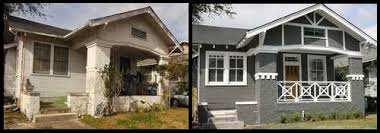 The resurging real estate market brings with it the real estate “flipper”. A flipper is a person or entity that purchases property with the goal of renovating it for a quick sale at a substantial profit. The flipper never intends to occupy the property in the neighborhood. Recently, the Wall Street Journal reported that luxury homes are joining more modest properties in the flip market. Even cooperative and condominium apartments can be subject to flipping.
The resurging real estate market brings with it the real estate “flipper”. A flipper is a person or entity that purchases property with the goal of renovating it for a quick sale at a substantial profit. The flipper never intends to occupy the property in the neighborhood. Recently, the Wall Street Journal reported that luxury homes are joining more modest properties in the flip market. Even cooperative and condominium apartments can be subject to flipping.
In a market-oriented society such as ours, one could argue that it is one’s own business as to how one invests and that properties can be purchased and sold despite one’s intent. However, others may argue that it is unseemly for opportunists to purchase properties merely with the intent to harvest a profit. The following are examples of how this plays out. A lender takes back a house in disrepair through the foreclosure process. Prior to the foreclosure, which took years, the house fell into significant disrepair and was unsightly to neighbors. Perhaps hazardous conditions developed from a dismantled oil tank and the removal of copper materials from the home. The foreclosed eyesore potentially reduces the property values of the surrounding neighbors. In this scenario, anyone who eventually purchases the house from the foreclosing lender and rehabilitates it into a habitable and cosmetically pleasing condition should be appreciated. Since the flipper’s goal is to sell to a person who will occupy the home, the flipper is this instance is beneficial to the neighborhood. Ultimately, there will be an occupant who becomes a neighbor contributing to the community.
Flipping takes on a different complexion in a cooperative building. It is not unusual for cooperative apartment corporations to charge a “flip tax” upon the sale of a unit. While flip taxes are typically charged on all sales, the philosophy behind them is to discourage short term ownership merely intended to raise a profit and to move funds back to the cooperative community upon sale in a means to benefit the entire cooperative “neighborhood”. Flip taxes are calculated in several ways, such as by a certain dollar amount per share. If one owns 200 shares and the flip tax is $5 per share, then the flip tax collected would be $1,000. Some buildings calculate the flip tax as a percentage of the sale price. If the sale price is $400,000 and the flip tax is at 1%, then the flip tax charged would be $4,000. Flip taxes may also be calculated as a percentage of the net profit, such as sale price minus original purchase price, less sale expenses such as brokerage commissions and transfer taxes. Flip taxes are to be enacted in accordance with the building’s governing documents, giving particular attention to whether the Board or all shareholders must vote on their enactment and the percentage approval vote required. Since most units within a building are similar and the state of repair is not apparent from the hallway or outside the building, flipping a unit is not necessarily beneficial to the rest of the building unless a flip tax is charged to the seller.
Our firm has assisted clients on various sides of the flipping process. We have represented foreclosing parties and estates seeking to dispose of properties to investors who intend to rehabilitate properties for sale. We have also assisted clients who have purchased properties from foreclosing lenders for flipping or for primary occupation. Our attorneys stand ready to assist you.
 New York Real Estate Lawyers Blog
New York Real Estate Lawyers Blog

